Sugar is an important element in baking, not just for the sweet taste, but also for the color, depth, thickness, and texture that it adds to food. Sugar helps create gorgeous golden crusts, makes cake and cookies come out light and soft with an airy, porous texture. Sugar thickens puddings, creams, and jams, and helps the yeast do its job for breads. You can nearly half the sugar content of a recipe without sacrificing all of those sugar benefits, and depending on the other ingredients, simply using less granulated sugar can considerably reduce the calorie content of the dessert. There is a wide variety of sugar substitutes, both natural and artificial, which you can have a lot of fun with in the kitchen.
Natural Sweeteners and Other Sweeteners
1. Honey
 Honey is actually sweeter than sugar by 25-50% and a perfect sugar substitutes for baking! Honey browns faster than granulated sugar and creates moist, dense baked goods.
Honey is actually sweeter than sugar by 25-50% and a perfect sugar substitutes for baking! Honey browns faster than granulated sugar and creates moist, dense baked goods.
How much and how: To substitute honey for sugar, use ¾ cup plus 1 tablespoon of honey for every 1 cup of sugar called for. Then, reduce all other liquid ingredients by 2 tablespoons. If the recipe includes buttermilk or sour cream, add a dash of baking soda to help with the acidity. Honey is great for recipes that yield soft, cake-like textures, such as coffee cakes.
2. Maple Syrup
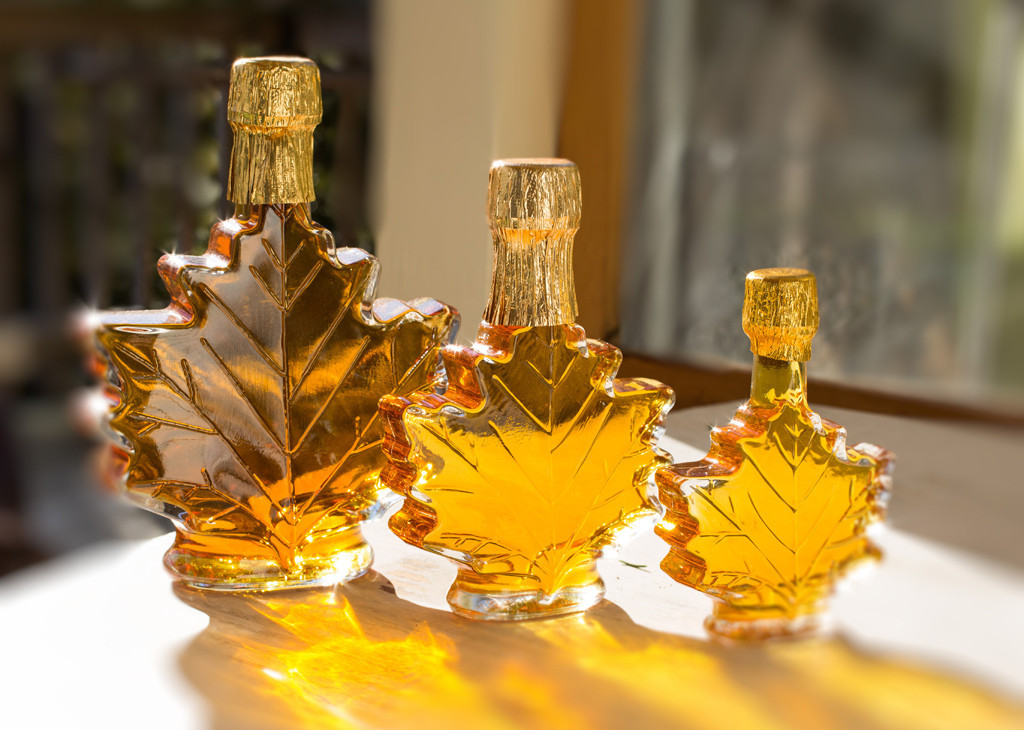 Maple syrup comes from boiling down the sap of sugar maple trees. Grade A maple syrup is golden brown and quite gentle. Grade B maple syrup is darker, much thicker and better for baking as it costs less and has a more robust flavor.
Maple syrup comes from boiling down the sap of sugar maple trees. Grade A maple syrup is golden brown and quite gentle. Grade B maple syrup is darker, much thicker and better for baking as it costs less and has a more robust flavor.
How much and how: Use ¾ cup of maple syrup for every cup of white sugar, and reduce other liquid ingredients by 3 tablespoons. It’s great to combine maple syrup with other sweeteners like molasses and barley malt syrup. It’s advised to not use maple syrup in recipes that have a creaming step.
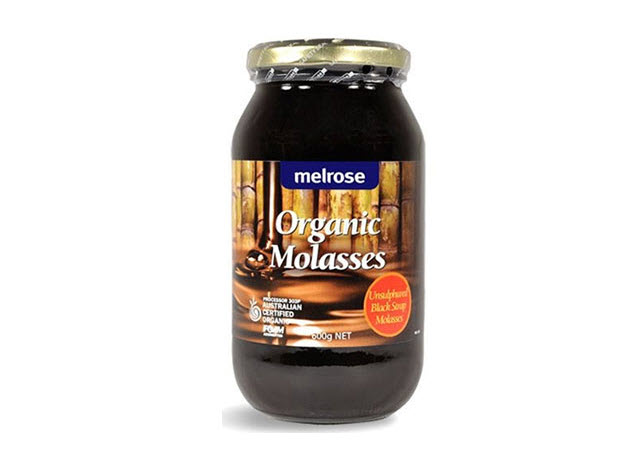 3. Molasses
3. Molasses
Molasses has small amounts of vitamin B, iron, and calcium, is not as sweet as sugar, and adds quite a strong flavor to foods.
How much and how: To substitute molasses for sugar, use 1¼ cups of molasses for 1 cup of sugar, reduce liquid ingredients by 5 tablespoons, and add ½ teaspoon of baking soda for each cup of molasses. This substitute is best used for cookies and gingerbreads, and as an addition to other sweeteners.
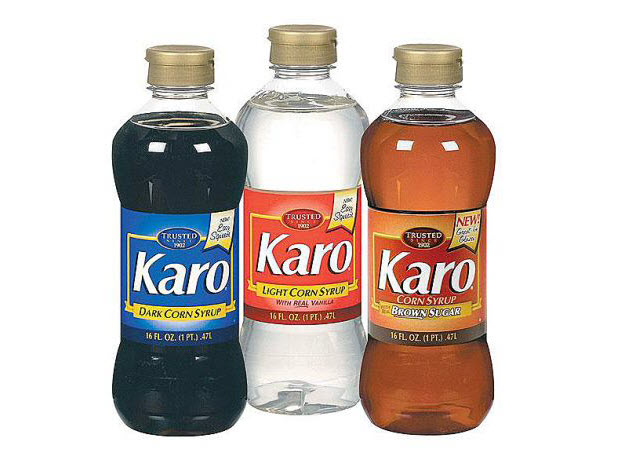 4. Corn Syrup
4. Corn Syrup
Corn syrup does not crystallize and is less sweet than sugar. It is known as an invert sugar. Corn syrup adds shine and body to a food.
How much and how: The general rule for corn syrup is to use ¾ for every cup of sugar. If baking cookies or a cake, reduce the temperature 25°F, and reduce the liquid ingredients by ¼ cup per cup of liquid sweetener. Corn syrup is beautiful in a chocolate sauce.
5. Refined Fructose
Fructose is sweeter than white sugar, and attracts more water, yielding more moist baked products. It can be substituted easily by adding ¼ than the sugar called for. Baking with fructose will create a darker in color product.
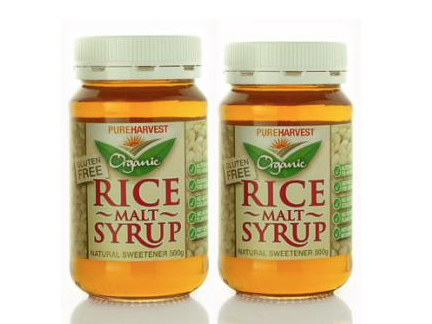 6. Brown Rice Malt Syrup
6. Brown Rice Malt Syrup
Brown rice malt syrup is similar to honey, but not as sweet. It’s made up of maltose, glucose, and complex carbohydrates.
How much and how: You can substitute brown rice malt syrup for sugar at the same ratio, cup for cup, but just be sure to reduce the liquid ingredients by ¼ cup per cup of syrup used. Brown rice malt syrup is good to use in candies, and fudgy brownie-like recipes.
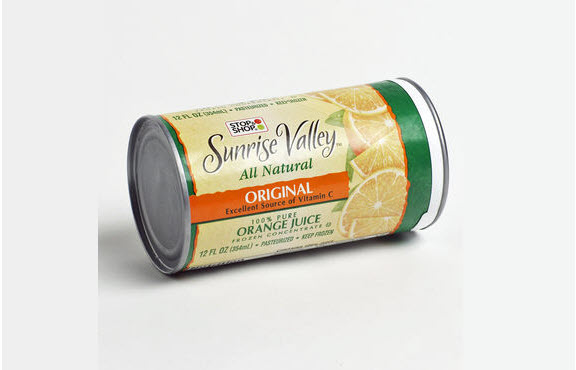 7. Fruit Juice Concentrates
7. Fruit Juice Concentrates
Juice concentrates like apple, orange, white grape juice serve as great sugar substitutes and also add exciting flavors.
How much and how: Just decrease other liquid ingredients by 3 tablespoons, and use ¾ cup of fruit juice concentrate for 1 cup of sugar. Use fruit juice concentrate when the flavor will complement the other ingredients, and it works well in cakes and quick breads.
 8. Stevia
8. Stevia
Stevia has been used for centuries in South America, but the herb has not yet been approved as a cooking ingredient by the FDA, so it is only available as a supplement.
How much and how: You can substitute 1 cup of sugar for 18-24 packets of stevia sweetener. You have room to play with this number depending on your sweet tooth craving. Stevia is 200 times sweeter than sugar, and is beneficial for those on strict diets. Stevia is one of the more popular sugar substitutes for baking.
 9. Agave Nectar
9. Agave Nectar
Agave nectar, or agave syrup, is sweeter than sugar, but is not considered a low-calorie substitute, as it contains 60 calories per tablespoon.
How much and how: You can use less of it though, just ¾ cup of agave nectar per cup of sugar. Then reduce the other liquid ingredients by ¼ cup. Agave browns quicker than sugar, so you’ll have to lower the baking temperature by 25°F. Agave is quite sticky, so parchment paper helps it not stick to your pans.
Artificial Sweeteners
1. Saccharine
Since saccharine is 200 to 700 times sweeter than sugar, it is recommended to use half the amount of saccharine when substituting it for sugar. Six packets of saccharine work well as a substitute for ¼ cup of sugar.
2. Acesulfame Potassium
Unlike aspartame, you can use acesulfame potassium for baking. 6 packets per ¼ cup of sugar does the trick, and can be found under the names Sunette® and Sweet One®.
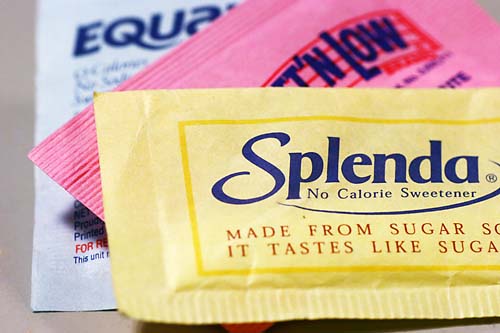 3. Sucralose
3. Sucralose
Colloquially known as Splenda®, sucralose is made from sugar, but the body does not metabolize it like sugar, making it one of the best sugar substitutes for baking. 1 cup of granulated sucralose can be substituted for 1 cup of sugar. Recipes made with sucralose bake quicker, so be sure to keep an eye on it while it’s in the oven.
Check out this helpful chart for more information on artificial sweeteners.
